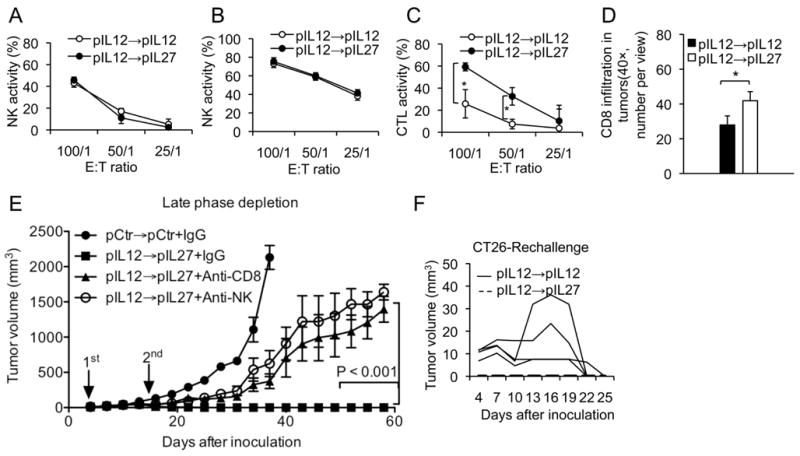FIGURE 5.

Comparison of the anti-tumor immune responses between IL12-IL12 and IL12-IL27 gene therapy. The same dose, treatment schedule and sequence described in Figure 1 were used in this experiment. Ten days after the final (the second) administration, anti-tumor immune responses between these two treatments were analyzed. The first administration was performed on day 11 after inoculation of tumor cells. A. NK cell cytolytic activity using homologous tumor cells and NK cell depleted spleen cells. B. NK cell cytolytic activity using Yac1 cells. C. Difference in T cell cytolytic activity (CTL) between IL12-IL12- and IL12-IL27-treated mice. CT26 tumor cells were used as target cells. *, represent significant difference at p<0.01. D. Difference in infiltration of T cells in CT26 tumors between IL12-IL12 and IL12-IL27 sequential gene therapy (p=0.036). E. Effect of depletion of CD8 T and NK cells on IL12-IL27 sequential gene therapy mediated anti-tumor efficacy. P<0.001 between injection of depletion antibodies against CD8 T cells or NK cells and injection of murine IgG on the indicated days. Antibodies were administered twice a week at a dose of 50 μg per mouse for each administration. Arrows indicates the plasmid DNA administrgation time. F. Kinetics of challenged tumor growth between the IL12-IL12 and IL12-IL27-cured mice.
